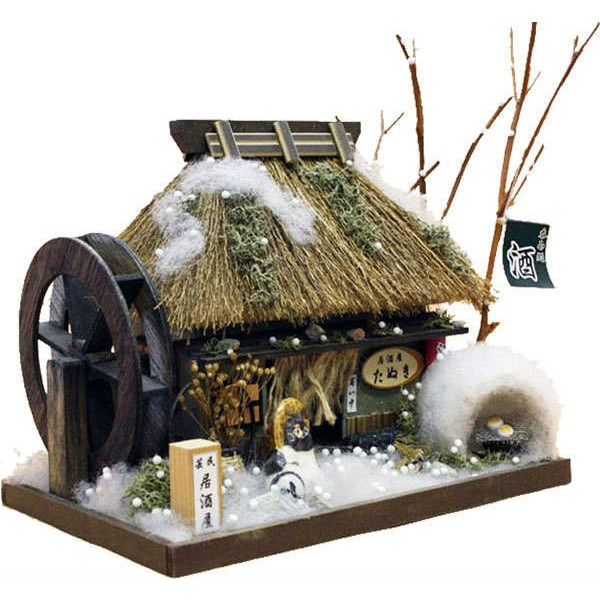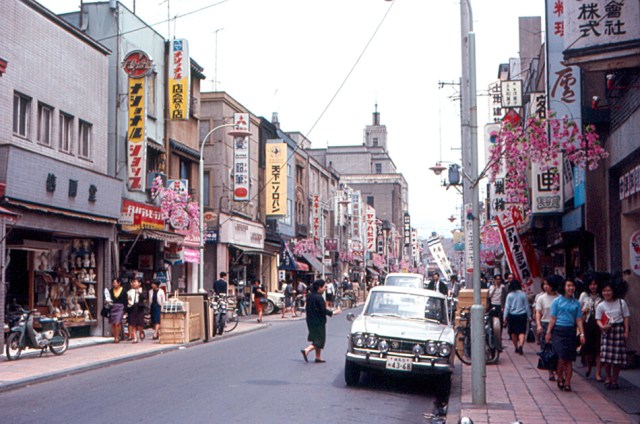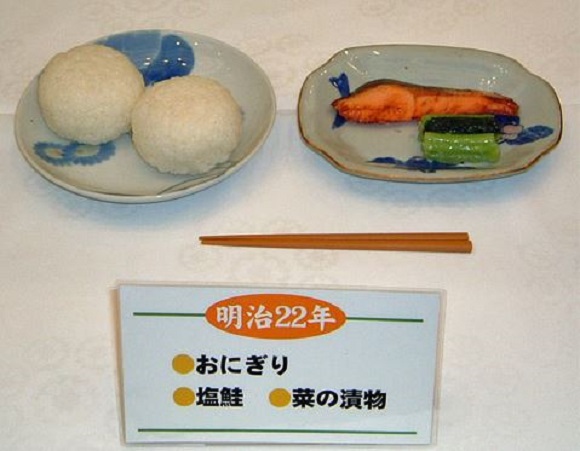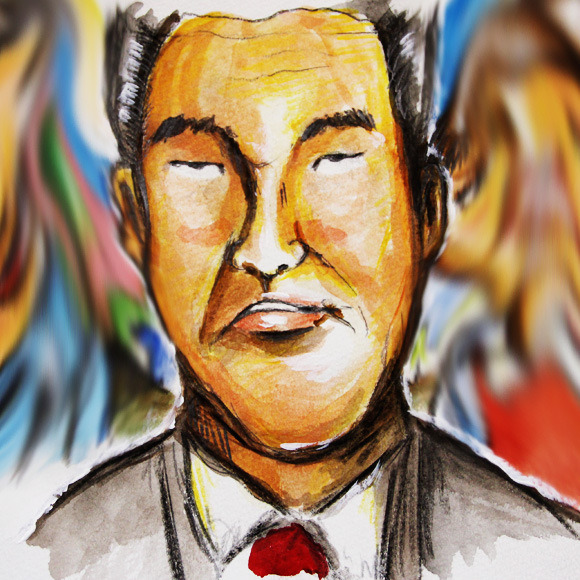While dollhouses have been popular in Europe for centuries, they didn’t really develop a strong showing in Japan until the 1970s. However, since they’ve gained a foothold in Japanese society, they’ve gained popularity and a number of domestic craftsmen have appeared. One of the hottest dollhouse makers in Japan (a phrase we never thought we’d write) has gotten a lot of attention online due to the high quality of the miniatures–particularly the dollhouses based on Japanese buildings!
Showa (Page 2)
The Showa period (1926-1989) was a time of immense change for Japan when the country went from being an imperial power to a poverty-stricken post-war nation and then becoming an economic powerhouse that dominated automotive and electronic industries around the world. Twenty-seven years since that era ended and the current Heisei era began, fond memories of “Showa Japan” still flood many Japanese minds.
But a recent online poll asked netizens to take off their rose-tinted glasses and consider the aspects of daily Showa-period life that, while seeming completely normal back then, would be unthinkable now. Join us after the jump for a look at the slightly grim feedback.
In the 22nd year of the Meiji era (aka 1889), the very first Japanese kyūshoku (school lunch) was served up at an elementary school in Tsuruoka City, Yamagata Prefecture. Although the first menu was very simply prepared, it provided the growing children with an important source of nourishment that not all of them could receive at home.
Fast-forward to 2015–Japanese schoolchildren (and their teachers!) continue to eat school lunches every day, as opposed to children in many other countries who bring their lunches from home. If you’re working in a Japanese school, you should already be familiar with the daily feeling of either excitement or disappointment when you see the lunch menu for the day. But just consider this–would you rather eat the types of lunches served today, or those that were served 100 years ago? Read on to learn about the evolution of Japanese school lunches and decide for yourself!
It goes without saying that corporal punishment is unforgivable. At least that’s the mode of thinking these days (and boy are we glad for it), but it wasn’t always the case. In the Showa Period (1926 to 1989), it was incredibly common in elementary, middle, and high schools. In fact, it was so common that it seemed almost inconceivable for a school not to have corporal punishment.
Still, we wondered what it was really like, so the prestigious RocketNews24 Japan team took a survey to find out what sorts of punishments were common in the Showa Period. Read More




 McDonald’s new Happy Meals offer up cute and practical Sanrio lifestyle goods
McDonald’s new Happy Meals offer up cute and practical Sanrio lifestyle goods Studio Ghibli glasses cases let anime characters keep an eye on your spectacles
Studio Ghibli glasses cases let anime characters keep an eye on your spectacles All-you-can-drink Starbucks and amazing views part of Tokyo’s new 170 meter-high sky lounge
All-you-can-drink Starbucks and amazing views part of Tokyo’s new 170 meter-high sky lounge Super Nintendo World expansion gets delayed for several months at Universal Studios Japan
Super Nintendo World expansion gets delayed for several months at Universal Studios Japan Kyoto’s 100 Demons yokai monster parade returns!
Kyoto’s 100 Demons yokai monster parade returns! Beautiful Sailor Moon manhole cover coasters being given out for free by Tokyo tourist center
Beautiful Sailor Moon manhole cover coasters being given out for free by Tokyo tourist center More foreign tourists than ever before in history visited Japan last month
More foreign tourists than ever before in history visited Japan last month Why women think Tom Hiddleston is the ideal man, according to Japanese Twitter
Why women think Tom Hiddleston is the ideal man, according to Japanese Twitter The oldest tunnel in Japan is believed to be haunted, and strange things happen when we go there
The oldest tunnel in Japan is believed to be haunted, and strange things happen when we go there Poseable North American Mega Man figure lets you admire the character’s belly in three dimensions
Poseable North American Mega Man figure lets you admire the character’s belly in three dimensions Disney princesses get official manga makeovers for Manga Princess Cafe opening in Tokyo
Disney princesses get official manga makeovers for Manga Princess Cafe opening in Tokyo Starbucks reopens at Shibuya Scramble Crossing with new look and design concept
Starbucks reopens at Shibuya Scramble Crossing with new look and design concept Beautiful new Final Fantasy T-shirt collection on the way from Uniqlo【Photos】
Beautiful new Final Fantasy T-shirt collection on the way from Uniqlo【Photos】 Is the new Shinkansen Train Desk ticket worth it?
Is the new Shinkansen Train Desk ticket worth it? Foreign English teachers in Japan pick their favorite Japanese-language phrases【Survey】
Foreign English teachers in Japan pick their favorite Japanese-language phrases【Survey】 Japanese convenience store packs a whole bento into an onigiri rice ball
Japanese convenience store packs a whole bento into an onigiri rice ball We try out “Chan Ramen”, an underground type of ramen popular in the ramen community
We try out “Chan Ramen”, an underground type of ramen popular in the ramen community Studio Ghibli releases Kiki’s Delivery Service chocolate cake pouches in Japan
Studio Ghibli releases Kiki’s Delivery Service chocolate cake pouches in Japan Japan’s bone-breaking and record-breaking roller coaster is permanently shutting down
Japan’s bone-breaking and record-breaking roller coaster is permanently shutting down New definition of “Japanese whiskey” goes into effect to prevent fakes from fooling overseas buyers
New definition of “Japanese whiskey” goes into effect to prevent fakes from fooling overseas buyers Our Japanese reporter visits Costco in the U.S., finds super American and very Japanese things
Our Japanese reporter visits Costco in the U.S., finds super American and very Japanese things Studio Ghibli unveils Mother’s Day gift set that captures the love in My Neighbour Totoro
Studio Ghibli unveils Mother’s Day gift set that captures the love in My Neighbour Totoro Foreign passenger shoves conductor on one of the last full runs for Japan’s Thunderbird train
Foreign passenger shoves conductor on one of the last full runs for Japan’s Thunderbird train Domino’s Japan now sells…pizza ears?
Domino’s Japan now sells…pizza ears? New Japanese KitKat flavour stars Sanrio characters, including Hello Kitty
New Japanese KitKat flavour stars Sanrio characters, including Hello Kitty Kyoto creates new for-tourist buses to address overtourism with higher prices, faster rides
Kyoto creates new for-tourist buses to address overtourism with higher prices, faster rides Sales of Japan’s most convenient train ticket/shopping payment cards suspended indefinitely
Sales of Japan’s most convenient train ticket/shopping payment cards suspended indefinitely Sold-out Studio Ghibli desktop humidifiers are back so Totoro can help you through the dry season
Sold-out Studio Ghibli desktop humidifiers are back so Totoro can help you through the dry season Japanese government to make first change to romanization spelling rules since the 1950s
Japanese government to make first change to romanization spelling rules since the 1950s Ghibli founders Toshio Suzuki and Hayao Miyazaki contribute to Japanese whisky Totoro label design
Ghibli founders Toshio Suzuki and Hayao Miyazaki contribute to Japanese whisky Totoro label design Doraemon found buried at sea as scene from 1993 anime becomes real life【Photos】
Doraemon found buried at sea as scene from 1993 anime becomes real life【Photos】 Tokyo’s most famous Starbucks is closed
Tokyo’s most famous Starbucks is closed One Piece characters’ nationalities revealed, but fans have mixed opinions
One Piece characters’ nationalities revealed, but fans have mixed opinions We asked a Uniqlo employee what four things we should buy and their suggestions didn’t disappoint
We asked a Uniqlo employee what four things we should buy and their suggestions didn’t disappoint Princesses, fruits, and blacksmiths: Study reveals the 30 most unusual family names in Japan
Princesses, fruits, and blacksmiths: Study reveals the 30 most unusual family names in Japan Beautiful Sailor Moon manhole cover coasters being given out for free by Tokyo tourist center
Beautiful Sailor Moon manhole cover coasters being given out for free by Tokyo tourist center More foreign tourists than ever before in history visited Japan last month
More foreign tourists than ever before in history visited Japan last month Why women think Tom Hiddleston is the ideal man, according to Japanese Twitter
Why women think Tom Hiddleston is the ideal man, according to Japanese Twitter The oldest tunnel in Japan is believed to be haunted, and strange things happen when we go there
The oldest tunnel in Japan is believed to be haunted, and strange things happen when we go there Poseable North American Mega Man figure lets you admire the character’s belly in three dimensions
Poseable North American Mega Man figure lets you admire the character’s belly in three dimensions Gacha capsule machines now dispense perfumes in Japan
Gacha capsule machines now dispense perfumes in Japan Constipated cats, sticky blue poop and more: Japan’s 9 weirdest vending machine toys
Constipated cats, sticky blue poop and more: Japan’s 9 weirdest vending machine toys Disney princesses get official manga makeovers for Manga Princess Cafe opening in Tokyo
Disney princesses get official manga makeovers for Manga Princess Cafe opening in Tokyo Studio Ghibli bath mats and towels will help wash your worries away
Studio Ghibli bath mats and towels will help wash your worries away Is Japan’s massive Shizuoka steak sandwich really as delicious as it looks in promo photos?
Is Japan’s massive Shizuoka steak sandwich really as delicious as it looks in promo photos? Why do I look normal in my home mirror, but hideous when I catch my reflection in a window?
Why do I look normal in my home mirror, but hideous when I catch my reflection in a window? The Fake Burger is now on the menu at Burger King Japan, but is it worth the hype?
The Fake Burger is now on the menu at Burger King Japan, but is it worth the hype?